According to Dr. Matt Stevens and Dr. Jennifer Day of Stevens-Day Construction Institute, the employment turnover rate for construction is double that “of most other industries.” The majority of this occurs in the field positions. High turnover leads to higher construction cost and lower productivity.
The project based nature of construction facilitates more frequent cycles of scaling up and down with employees. Often construction companies will hire and rehire the same employees repeatedly over the years having to let him or her go during periods of less project activity. Stevens and Day identify a variety of impacts on the workforce from this lack of employment continuity. The effects can diminish trust and loyalty as well as management effectiveness but the worst impact comes in the disruption created by “learning and forgetting” during periods of job tenure followed by job loss.
When employees separate from a company, even for a short period of time, they are no longer engaged in mastering their craft. This begins a downward spiral of forgetting. Once rehired craft workers are often rushed back into full production on jobs and required to “re-hone” skills in a chaotic environment driven by project timelines or the initial project start up. Learning during periods of chaos have been shown to have the lowest transfer to long term behavior or skill change. This leads to a cycle of reduced learnings during chaotic times followed by periods of forgetting during non-work periods. The impact on long term skill retention and development becomes evident.
What is the answer? How does the industry balance the workforce struggle of needing “just in time” craft employees with a desire to upskill the craft workforce? I propose two fundamental changes in operation to help address the workforce issues facing the construction industry.
1. Utilization of strong competency models for craft workers allow the craft worker and employee to equally understand the requirements of the position. The development or adoption of a robust competency model facilitates career growth and productivity for new employees by outlining the progression from new to competent in a specific craft while allowing the rehire to quickly demonstrate competency using performance verifications. Building the competency models into larger career frameworks drives the industry forward as well as allows rehires to re-enter training programs without having to restart each time they return to employment.
2. Utilizing community training groups to maintain skills during periods of unemployment helps both craft worker and company. During periods of downturn referring a former employee to community based training programs establishes a level of good faith between worker and company. The employee in turn stays current in his or her craft by either taking courses or mentoring students who are currently studying. Knowing that much of a person’s craft skill comes from on-the-job training, community based training programs benefit by having more senior level craft workers mentoring those just entering the industry. In this scenario, employers, craft workers and community based training programs all win. Returning employees can bring with them young, fresh workers from the programs. Employers get happier and more loyal returning employees and community programs continue to build relationship and place individuals with construction companies around Houston.
In the end, changing the fundamental nature of project work would allow for different hiring models that provide for stabilized needs in relation to craft workers. However, construction will remain project driven for the foreseeable future making changes in hiring practices unfeasible. Thereby increasing the need for quality competency models and leverage of training partners as the best alternatives to alleviate the “learning/forgetting’ churn felt by the construction industry.
Reference
https://myemail.constantcontact.com/Construction-s-High-Employee-Turnover.html?soid=1100778333859&aid=UL-Luj32LX8
Angela Murphy
People Development Program Managers

